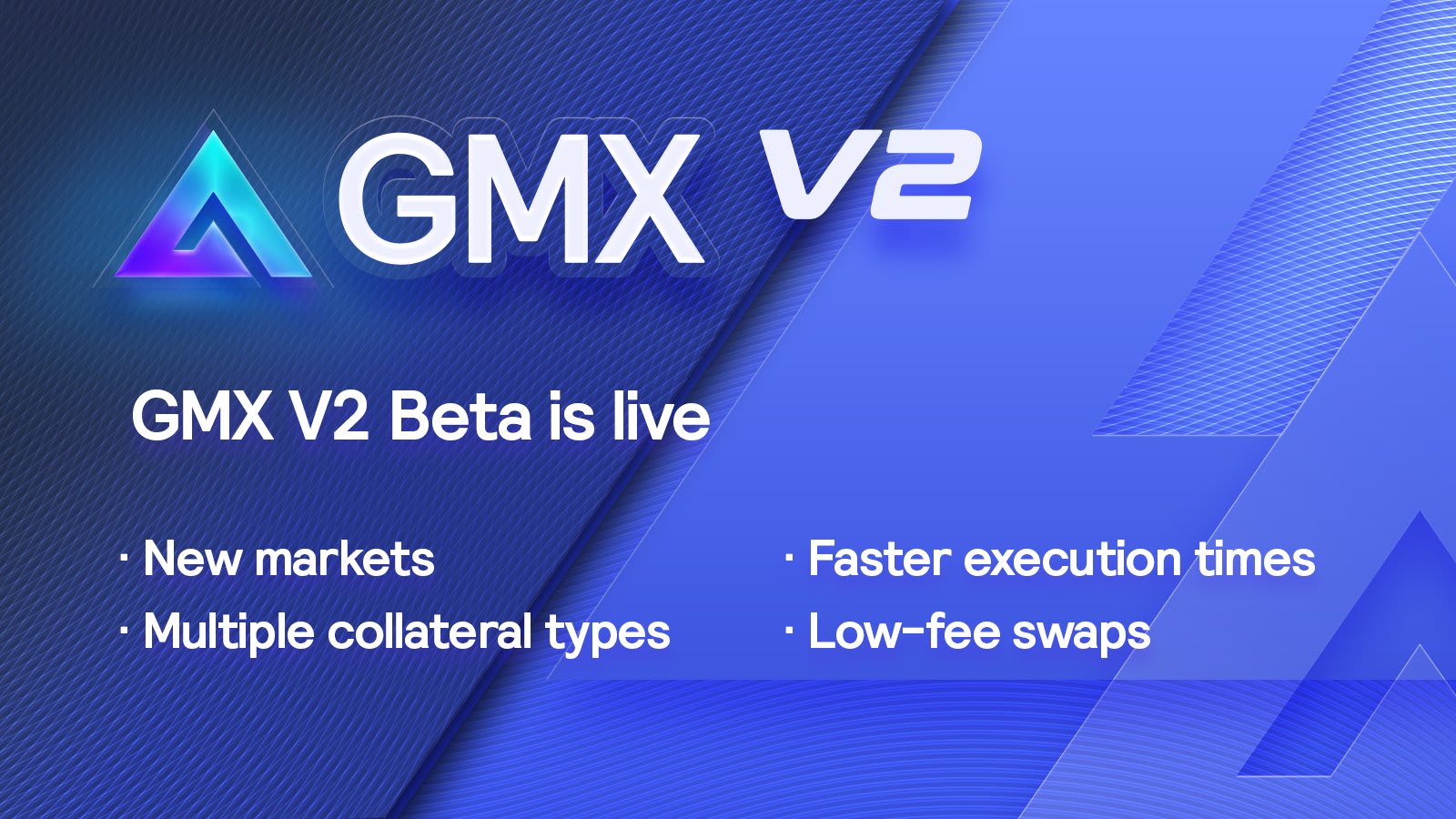Introducing GMX V2
GMX V2 beta was launched on August 6th, bringing exciting updates to the Arbitrum and Avax platforms. Traders now have access to a range of new assets including SOL, XRP, LTC, DOGE, and ARB. They can take advantage of multiple collateral types and enjoy faster execution speed while minimizing slippage.

GMX is a decentralized exchange (DEX) for trading perpetual cryptocurrency futures with up to 50X leverage on popular cryptocurrencies like BTC, ETH and more. The platform launched in September 2021 as Gambit Exchange. To date, GMX has a total trading volume of over $130B and 283K total users, making it the leading derivatives DEX on Arbitrum and Avalanche Link.

GMX V2 beta has been launched on Arbitrum and Avax. It introduces new assets for trading such as SOL, XRP, LTC, DOGE, and ARB. Traders can utilize multiple collateral types and experience faster execution speed with lower slippage. The oracle system signs prices every block, ensuring orders are executed at the closest possible price. Low fees are charged for swaps and positions. Liquidity providers can customize exposure through isolated pools and enjoy stronger incentives for balancing longs and shorts. Swap incentives maintain token balance in the pool for predictable returns. Feedback is highly appreciated. For more information, visit.
Methodology
This dashboard aims to analyze and examine the latest upgrade of the GMX platform, which was launched on August 6th. The upgrade introduced several new features that are detailed in the introduction section.
The dashboard consists of six tabs, each focusing on different aspects of the platform's performance and changes brought about by the upgrade.
In the first tab, an introduction is provided about the GMX platform and the features introduced in the latest upgrade. This tab serves as an overview to familiarize users with the platform and the enhancements made.
The second tab presents the total data of the platform, comparing the metrics before and after the upgrade over equal periods. This analysis provides a comprehensive view of the platform's performance and any notable changes resulting from the upgrade.
The third tab displays the over time data of the platform, both before and after the upgrade, again over equal periods. This tab allows for a more detailed examination of the platform's progression and performance over time, highlighting any trends or shifts following the upgrade.
The fourth tab focuses on users' activity on the platform. It delves into user behavior, transaction frequency, and volume to provide insights into how users have interacted with the platform before and after the upgrade.
In the fifth tab, the top 10 most popular swap from/to tokens are investigated, comparing their usage before and after the upgrade. This analysis sheds light on any changes in token preferences and trading patterns resulting from the upgrade.
The last tab of the dashboard compares GMX with other decentralized exchanges (Dexs) on the Avalanche platform. This section provides a benchmark for evaluating GMX's performance relative to its competitors, allowing for a broader perspective on its market position.
By utilizing these different tabs and their respective analyses, the dashboard aims to present a comprehensive evaluation of GMX's latest upgrade and its impact on the platform's performance, user activity, and market presence.
Summary
The upgrade of the GMX platform has successfully increased the number of GMX pools, indicating a positive impact on pool offerings. However, there has not been a significant increase in swap transactions, swappers, or swap volume after the upgrade, suggesting that the upgrade has not directly translated into higher overall trading activity. It is important to consider that the full impact of the upgrade may take time to materialize, and a reassessment of the platform's performance after 3 to 6 months would provide a clearer understanding of its effects. Monitoring the platform's metrics over time is crucial for a comprehensive evaluation. Additionally, an analysis of user activity revealed that most users conducted a single transaction before and after the upgrade, indicating limited impact on transaction frequency. Furthermore, the popularity of swap tokens showed some shifts after the upgrade, with USDC consistently being a popular choice. Finally, when comparing GMX with other Dexs on the Avalanche network, Trader Joe emerged as the leading Dex in terms of swap transactions and volume, overshadowing GMX. Continued monitoring and analysis of the Dex ecosystem would provide insights into any changes in market dynamics and GMX's performance relative to its competitors.